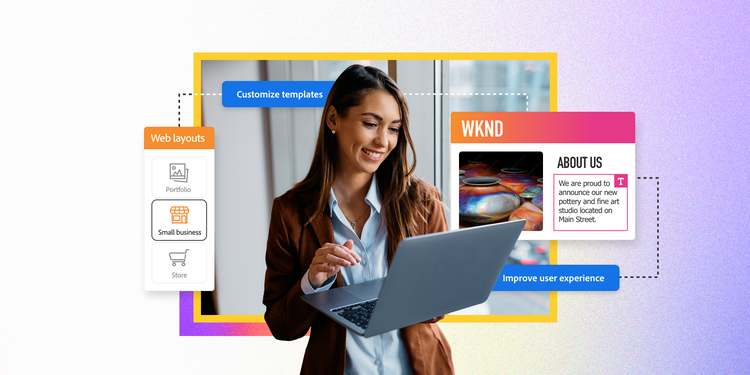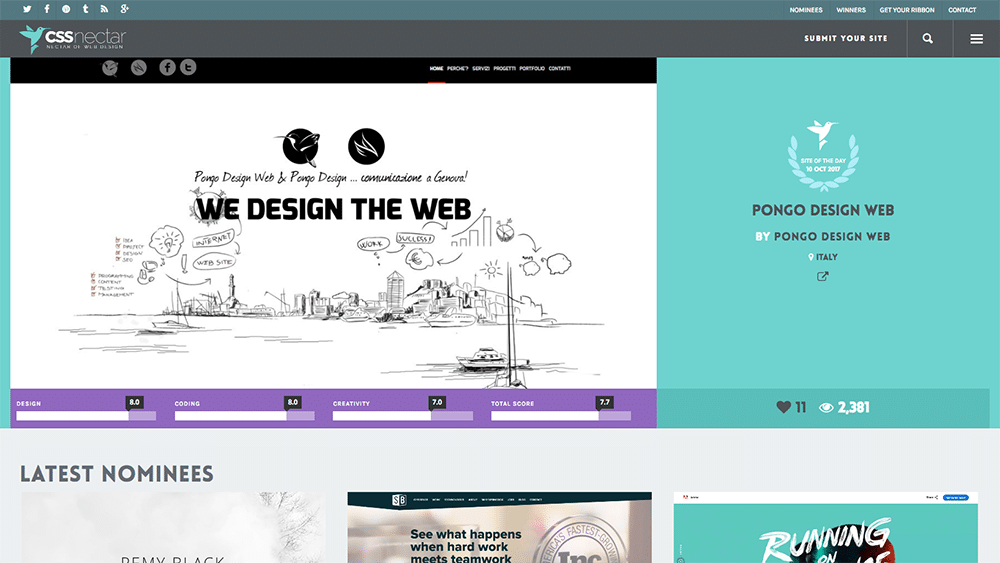Website Design Trends to Look Out For for a Contemporary Aesthetic
Website Design Trends to Look Out For for a Contemporary Aesthetic
Blog Article
Important Concepts of Web Site Design: Producing User-Friendly Experiences
In the world of internet site layout, the creation of easy to use experiences is not simply an essential requirement however a visual pursuit. Vital principles such as user-centered layout, intuitive navigating, and accessibility work as the backbone of efficient electronic systems. By concentrating on individual needs and choices, developers can cultivate involvement and fulfillment, yet the ramifications of these principles prolong beyond mere capability. Comprehending exactly how they intertwine can substantially affect a site's overall efficiency and success, triggering a more detailed examination of their individual functions and cumulative influence on customer experience.
Importance of User-Centered Layout
Focusing on user-centered layout is important for creating efficient sites that meet the requirements of their target audience. This strategy positions the user at the forefront of the style process, making sure that the web site not only works well but likewise resonates with customers on a personal degree. By understanding the individuals' habits, preferences, and objectives, designers can craft experiences that promote engagement and contentment.

Additionally, embracing a user-centered design viewpoint can cause boosted ease of access and inclusivity, catering to a varied target market. By thinking about numerous individual demographics, such as age, technological efficiency, and social histories, developers can develop web sites that rate and practical for all.
Eventually, focusing on user-centered style not only boosts user experience but can likewise drive key business results, such as increased conversion rates and consumer commitment. In today's affordable digital landscape, understanding and focusing on customer requirements is a vital success variable.
Intuitive Navigating Frameworks
Efficient web site navigating is often an essential factor in boosting user experience. Intuitive navigation frameworks allow users to find info rapidly and efficiently, lowering aggravation and raising engagement.
To produce instinctive navigating, designers need to focus on quality. Labels need to be descriptive and familiar to users, preventing jargon or ambiguous terms. An ordered framework, with main categories causing subcategories, can additionally assist individuals in comprehending the connection in between various sections of the website.
Furthermore, integrating aesthetic hints such as breadcrumbs can direct users with their navigating course, enabling them to quickly backtrack if needed. The inclusion of a search bar likewise boosts navigability, providing users guide accessibility to content without needing to navigate via numerous layers.
Receptive and Flexible Designs
In today's electronic landscape, ensuring that internet sites operate effortlessly throughout various tools is vital for individual complete satisfaction - Website Design. Flexible and receptive formats are two essential methods that allow this performance, dealing with the varied variety of display sizes and resolutions that customers might come across
Responsive formats utilize fluid grids and adaptable pictures, permitting the web site to automatically readjust its components based upon the display measurements. This strategy supplies a consistent experience, where content reflows dynamically to fit the viewport, which is particularly helpful for mobile individuals. By making use of CSS media inquiries, developers can create breakpoints that optimize the format for various devices without the need for separate layouts.
Flexible designs, on the various other hand, use predefined formats for specific screen sizes. When a user accesses the site, the web server spots the device and offers the appropriate format, making sure an optimized experience for varying resolutions. This can lead to much faster loading times and improved efficiency, as each layout is customized to the device's capacities.
Both responsive and flexible layouts are crucial for boosting individual interaction and complete satisfaction, eventually adding to the web site's total effectiveness in satisfying its purposes.
Regular Visual Power Structure
Developing a consistent aesthetic power structure is essential for assisting customers via an internet site's web content. This principle guarantees that info exists in a way that is both user-friendly and appealing, enabling individuals to conveniently browse and comprehend the product. A distinct hierarchy employs different layout components, such as dimension, comparison, shade, and spacing, to develop a clear distinction between various sorts of web content.

Moreover, constant application of these aesthetic signs throughout the internet site cultivates experience and depend on. Users can promptly find out to recognize patterns, making their communications more efficient. Inevitably, a strong visual hierarchy not only improves customer experience but likewise boosts overall website use, encouraging deeper involvement and assisting in the desired actions on an internet site.
Accessibility for All Individuals
Access for all individuals is a basic facet of website style that makes certain everyone, no matter their capacities or handicaps, can involve with and gain from on the internet web content. Designing with accessibility in mind involves carrying out methods that fit varied customer demands, such as those with aesthetic, acoustic, electric motor, or cognitive impairments.
One necessary standard is to abide by the Internet Material Accessibility Guidelines (WCAG), which supply a structure for developing accessible electronic experiences. This consists of making use of sufficient color contrast, offering text alternatives for images, and making sure that navigating is keyboard-friendly. Furthermore, utilizing responsive layout methods makes sure that web sites work efficiently across numerous devices and screen sizes, better boosting accessibility.
An additional essential factor is the usage of clear, succinct language that stays clear of lingo, making content understandable for all individuals. Engaging customers with assistive Get More Information modern technologies, such as display visitors, requires mindful interest to HTML semantics and ARIA (Obtainable Abundant Internet Applications) roles.
Ultimately, focusing on accessibility not just satisfies legal obligations yet likewise increases the target market reach, promoting inclusivity and enhancing individual contentment. A commitment to ease of access mirrors a commitment to creating fair electronic atmospheres for all users.
Final Thought
Finally, the vital concepts of see this site site layout-- user-centered style, user-friendly navigation, receptive formats, regular visual pecking order, and availability-- jointly contribute to the production of easy to use experiences. Website Design. By focusing on customer needs and guaranteeing that all individuals can effectively engage with the website, developers boost functionality and foster inclusivity. These concepts not just enhance customer contentment but also drive positive company end results, ultimately demonstrating the crucial relevance of thoughtful web site layout in today's digital landscape
These methods supply very useful understandings into individual expectations and pain points, allowing designers to tailor the web site's functions and content appropriately.Effective site navigation is commonly a critical factor in enhancing customer experience.Establishing a regular visual pecking order explanation is crucial for guiding individuals with a web site's web content. Ultimately, a strong visual hierarchy not just boosts customer experience however likewise enhances general website use, motivating deeper engagement and facilitating the wanted activities on a web site.
These principles not only boost user complete satisfaction but additionally drive favorable company end results, eventually demonstrating the crucial importance of thoughtful internet site style in today's digital landscape.
Report this page